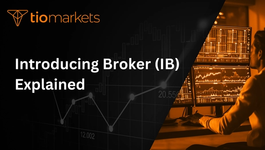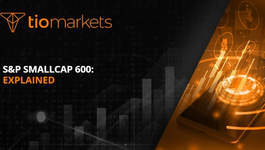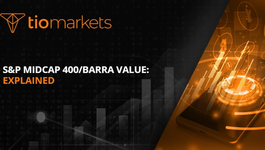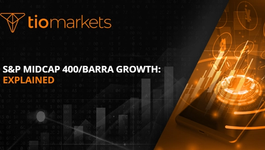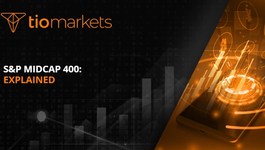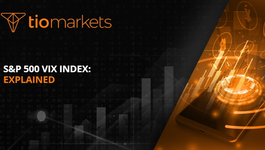Electronic trading: Explained | TIOmarkets
BY TIOmarkets
|July 5, 2024Electronic trading, also known as e-trading, is a method of trading securities (such as stocks, bonds, and derivatives), foreign exchange or financial derivatives electronically. This method of trading has revolutionized the financial markets, making it possible for anyone with an internet connection to participate in the global marketplace. This article will delve into the intricacies of electronic trading, providing a comprehensive understanding of its workings, benefits, and challenges.
Electronic trading is a broad term that encompasses a variety of trading technologies and platforms. These platforms enable investors to trade financial instruments electronically, without the need for physical trading floors or face-to-face interactions. The advent of electronic trading has democratized access to financial markets, making it possible for individual investors to trade alongside institutional investors.
History of Electronic Trading
The history of electronic trading is a fascinating journey that reflects the rapid advancement of technology in the late 20th and early 21st centuries. The advent of electronic trading can be traced back to the 1970s, when the NASDAQ became the first electronic stock market, allowing for the trading of securities electronically.
Over the years, electronic trading has evolved significantly, with the introduction of new technologies and platforms that have made trading more accessible and efficient. The rise of the internet in the 1990s was a game-changer for electronic trading, as it allowed for the development of online trading platforms that could be accessed by anyone with an internet connection.
Early Electronic Trading Systems
The early electronic trading systems were primarily used by institutional investors and were quite rudimentary compared to today's advanced platforms. These systems were primarily used for trading stocks and were not yet capable of handling complex financial instruments like derivatives.
Despite their limitations, these early systems laid the groundwork for the sophisticated electronic trading platforms that we see today. They demonstrated the potential of electronic trading and paved the way for further technological advancements in this field.
Modern Electronic Trading Platforms
Modern electronic trading platforms are sophisticated systems that provide a wide range of features and capabilities. These platforms allow traders to execute trades quickly and efficiently, with real-time access to market data and advanced trading tools.
These platforms also provide a high level of transparency, with traders able to see the bids and offers of other market participants. This level of transparency has helped to level the playing field for individual investors, who can now compete with institutional investors on a more equal footing.
Types of Electronic Trading Platforms
There are several types of electronic trading platforms, each with its own unique features and benefits. These platforms can be broadly categorized into two types: broker-based platforms and direct market access (DMA) platforms.
Broker-based platforms are provided by brokerage firms and are typically used by individual investors. These platforms provide a user-friendly interface and a range of trading tools, but they may not offer the same level of market access as DMA platforms.
Broker-Based Platforms
Broker-based platforms are typically designed with the individual investor in mind. These platforms provide a user-friendly interface and a range of trading tools, making it easy for individual investors to execute trades and manage their portfolios.
These platforms also provide a range of educational resources, including tutorials, webinars, and market analysis, to help investors make informed trading decisions. However, these platforms may not offer the same level of market access as DMA platforms, as trades are typically routed through the brokerage firm's trading desk.
Direct Market Access Platforms
Direct market access (DMA) platforms are typically used by institutional investors and high-frequency traders. These platforms provide direct access to the market, allowing traders to execute trades directly with other market participants.
DMA platforms offer a high level of transparency and control, with traders able to see the bids and offers of other market participants and execute trades at the best available price. However, these platforms can be complex and may require a higher level of trading knowledge and experience.
Benefits of Electronic Trading
Electronic trading has numerous benefits that have contributed to its widespread adoption. These benefits include increased market access, lower trading costs, and improved trading speed and efficiency.
One of the key benefits of electronic trading is the increased market access it provides. With electronic trading, investors can trade a wide range of financial instruments, from stocks and bonds to derivatives and foreign exchange, from anywhere in the world. This has democratized access to financial markets, making it possible for individual investors to trade alongside institutional investors.
Lower Trading Costs
Electronic trading has also led to lower trading costs. In the past, trading costs were high due to the need for human intermediaries, such as brokers and dealers. However, with electronic trading, these intermediaries are no longer necessary, leading to significant cost savings for investors.
Furthermore, electronic trading platforms often offer competitive commission rates, further reducing the cost of trading. This has made trading more affordable for individual investors, encouraging more people to participate in the financial markets.
Improved Trading Speed and Efficiency
Another key benefit of electronic trading is the improved trading speed and efficiency it provides. Electronic trading platforms allow for the execution of trades in a matter of seconds, significantly faster than traditional methods of trading.
This increased speed and efficiency can be particularly beneficial in volatile markets, where prices can change rapidly. With electronic trading, investors can react quickly to market changes, increasing their chances of executing trades at the desired price.
Challenges of Electronic Trading
Despite its numerous benefits, electronic trading also presents several challenges. These challenges include technological risks, market manipulation, and the need for regulatory oversight.
Technological risks are a significant challenge in electronic trading. These risks can arise from system failures, software bugs, and cyber-attacks, among other things. These risks can disrupt trading activities and lead to significant financial losses.
Market Manipulation
Market manipulation is another challenge in electronic trading. This can occur when traders use deceptive practices to influence the price of a financial instrument for their own gain. Electronic trading platforms can be particularly vulnerable to market manipulation due to their high speed and automation.
Regulatory authorities have implemented measures to detect and prevent market manipulation, but it remains a significant challenge in electronic trading. Investors need to be vigilant and report any suspicious trading activities to the relevant authorities.
Need for Regulatory Oversight
The need for regulatory oversight is another challenge in electronic trading. Due to the complexity and speed of electronic trading, it can be difficult for regulatory authorities to monitor trading activities and enforce regulations.
Despite these challenges, regulatory authorities around the world are working to enhance their oversight of electronic trading. This includes implementing new regulations, enhancing surveillance capabilities, and working with industry stakeholders to promote best practices in electronic trading.
Conclusion
Electronic trading has revolutionized the financial markets, making it possible for anyone with an internet connection to participate in the global marketplace. While it presents several challenges, the benefits of electronic trading, such as increased market access, lower trading costs, and improved trading speed and efficiency, are undeniable.
As technology continues to advance, it is likely that electronic trading will continue to evolve and play an increasingly important role in the financial markets. Whether you are an individual investor or an institutional trader, understanding the workings of electronic trading is crucial to navigating the financial markets in the digital age.
Start Your Electronic Trading Journey with TIOmarkets
Ready to take advantage of the digital revolution in the financial markets? Join TIOmarkets, a top rated forex broker, and start trading with confidence. With over 170,000 accounts opened across more than 170 countries, we provide you with the opportunity to trade over 300 instruments across 5 markets, including Forex, indices, stocks, commodities, and futures, all with low fees. Enhance your trading skills with our comprehensive suite of educational resources and step-by-step guides. Don't wait any longer to embark on your electronic trading journey. Create a Trading Account today and be part of the future of trading.
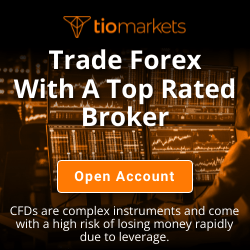
Risk disclaimer: CFDs are complex instruments and come with a high risk of losing money rapidly due to leverage. You should consider whether you understand how CFDs work and whether you can afford to take the high risk of losing your money. Never deposit more than you are prepared to lose. Professional client’s losses can exceed their deposit. Please see our risk warning policy and seek independent professional advice if you do not fully understand. This information is not directed or intended for distribution to or use by residents of certain countries/jurisdictions including, but not limited to, USA & OFAC. The Company holds the right to alter the aforementioned list of countries at its own discretion.
Join us on social media

Behind every blog post lies the combined experience of the people working at TIOmarkets. We are a team of dedicated industry professionals and financial markets enthusiasts committed to providing you with trading education and financial markets commentary. Our goal is to help empower you with the knowledge you need to trade in the markets effectively.
